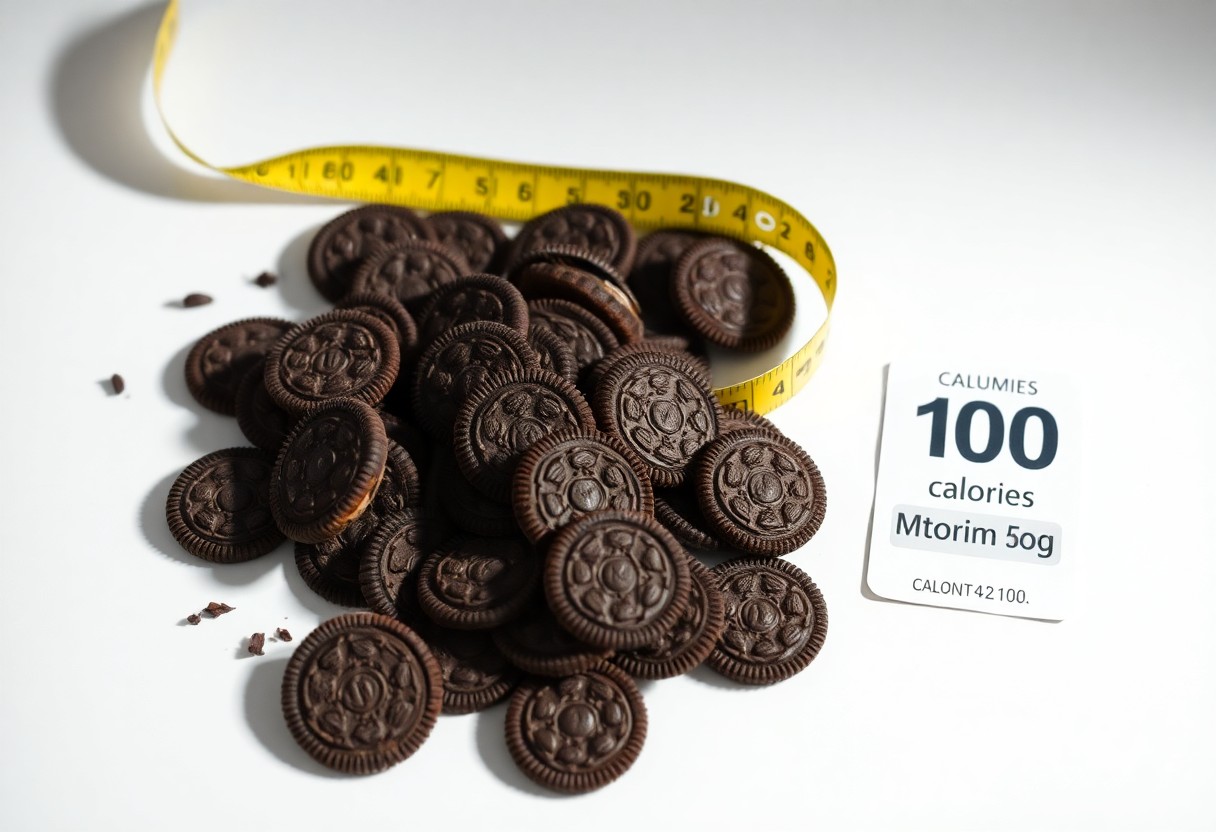Just because Oreo Thins are slimmer doesn’t automatically make them a healthier choice for your snacking habits. In this post, you’ll discover the crucial differences in calories, sugar, and fat content between traditional Oreos and their thinner counterparts. By examining the nutritional aspects and the ingredients used, you can make an informed decision on whether Oreo Thins can fit into your diet without sacrificing your health goals. Are they really worth the hype? Let’s find out!
Key Takeaways:
- Oreo Thins contain fewer calories than regular Oreos, making them a lighter option for those looking to indulge in a sweet treat.
- While lower in calories, Oreo Thins still contain sugar and unhealthy fats, so moderation is important for a balanced diet.
- Healthier snack options should prioritize whole ingredients and nutritional content over simply being lower in calories.

Understanding Oreo Thins
A popular snack among cookie lovers, Oreo Thins are marketed as a lighter alternative to the traditional Oreo. These slimmer cookies maintain the classic flavor but with fewer calories and less sugar. They come in various flavors, appealing to those looking for a guilt-free treat while still satisfying their sweet tooth.
Nutritional Comparison with Regular Oreos
Above is a comparison of the nutritional content between Oreo Thins and regular Oreos:
| Nutritional Content | Oreo Thins (per 2 cookies) | Regular Oreos (per 2 cookies) |
|---|---|---|
| Calories | 140 | 160 |
| Sugar | 10g | 14g |
| Fat | 7g | 7g |
| Protein | 1g | 1g |
Ingredient Analysis
Below, you will examine the ingredients used in Oreo Thins and how they differ from the traditional version.
It’s important to note that Oreo Thins contain similar ingredients to regular Oreos but in different proportions. The main ingredients include chocolate wafer, filling, and leavening agents. While the absence of some common additives can be a plus, you will still find sugar and high fructose corn syrup, which can pose health risks when consumed excessively. Additionally, the presence of palm oil may raise concerns due to its impact on heart health. It’s imperative to evaluate these ingredients in the context of your overall diet and choose accordingly.
Caloric Content and Portion Control
Clearly, when it comes to snacking, understanding caloric content and practicing portion control is key to making informed choices. Oreo Thins offer a lower-calorie alternative to traditional Oreos, but it is important to consider how many servings you consume in one sitting. You might find that these seemingly healthier cookies can quickly add up in calories if eaten in excess.
Serving Sizes Explained
Against the backdrop of snacking, serving sizes play an integral role in maintaining your health goals. While Oreos Thins are marketed as a lighter option, one serving consists of just four cookies, which can feel insubstantial and lead you to indulge in multiple servings before realizing it.
The Role of Caloric Density
An aspect to consider is the caloric density of snacks like Oreo Thins compared to regular cookies. While they may have fewer calories per cookie, the feeling of satisfaction you get from healthier snacks can differ significantly.
In fact, caloric density measures how many calories are packed into a specific weight or volume of food. With Oreo Thins, you might be tempted to eat more to achieve that sense of fullness, ultimately consuming more calories than intended. It’s important to be aware that even lower-calorie options can lead you to overeat if you’re not mindful of serving sizes. Your best bet is to balance your indulgences by being conscious of portion sizes and integrating them wisely into your diet.

Sugar and Fat Content
Now, when considering whether Oreo Thins are a healthier option, it’s imperative to analyze their sugar and fat content. While they are marketed as a lighter alternative, understanding their comparative nutritional value can help you make an informed choice. This can ultimately impact your snack decisions based on your dietary needs and preferences.
Comparison of Sugar Levels
Before stepping into the details, let’s take a closer look at how Oreo Thins stack up against regular Oreos in terms of sugar content:
| Type of Oreo | Sugar Content (per serving) |
|---|---|
| Regular Oreo | Sandwich cookies: 10.3g |
| Oreo Thins | Thin Crisps: 4.5g |
Impact of Reduced Fat
On the other hand, reducing fat in Oreo Thins also plays a significant role in their overall nutritional profile. With less fat, you may perceive them as a healthier snack; however, it’s important to consider the trade-offs in texture and flavor.
And while Oreo Thins contain less fat than their classic counterparts, this reduction may lead to increased craving for more cookies since they may lack the satisfying richness. Additionally, the thinner texture might prompt you to consume more servings than intended, which can offset their calorie benefits. Thus, balancing enjoyment and moderation is key to enjoying Oreo Thins as part of your snacking while keeping your health goals in mind.
The Psychological Effect of Slimmer Snacks
Keep in mind that the appearance of a snack can significantly influence your perception and enjoyment of it. Slimmer snacks, like Oreo Thins, may evoke a sense of guilt-free indulgence, making you feel better about your choices. This psychological aspect can lead to increased satisfaction and encourage you to indulge more often, blurring the lines between true health benefits and mere perception.
Perception of Eating Healthy
Above all, when you choose a thinner version of a familiar snack, it can create a mental association with healthier eating habits. This perception may lead you to believe that you’re making a better choice, even if the nutritional difference is minimal. Engaging in such mindful eating can sometimes play a significant role in reducing guilt associated with indulgence.
Satisfaction and Satiety Factors
Below, when enjoying slimmer snacks, it’s vital to recognize the potential gap between satisfaction and physical satiety. Thinner treats might not provide the same level of fullness as their indulgent counterparts, making it easier for you to overindulge without realizing it. The result could be a combination of pleasure and regret during and after your snack time. Thou.
Plus, the size of your favorite treats can impact your satisfaction and satiety levels. Larger portions often lead you to feel more satisfied, while thinner options might leave you wanting more—even if they are lower in calories. Your brain may trick you into consuming larger quantities to achieve that desired fullness, ultimately negating any health benefits you thought you were gaining from choosing slimmer snacks. Thou.
Consumer Sentiment and Trends
Many consumers today are on the lookout for snacks that fit into a healthier lifestyle. As a result, you might find yourself leaning towards products marketed as “light” or “thin,” like Oreo Thins. The evolving perception of portion control and low-calorie options influences purchasing decisions, making slimmer snacks increasingly popular among health-conscious shoppers.
Popularity of Thin Snacks
Below the surface, the rise of thin snacks reflects broader consumer trends emphasizing moderation and balanced eating. You may notice how these products often come with a perception of being guilt-free, allowing you to indulge without straying too far from your dietary goals.
Marketing Strategies Behind Oreo Thins
Across the industry, marketing strategies play a pivotal role in shaping consumer perceptions of products like Oreo Thins. These ads often highlight their lighter texture and lower calorie count, appealing to your desire for indulgence without the associated guilt. You might see taglines that emphasize moderation, making you feel like you’re making a more informed choice, while still enjoying a familiar treat.
Plus, Oreo Thins utilize high-impact visual branding to attract buyers, presenting themselves as the perfect balance between indulgence and mindfulness. By showcasing their slim design and emphasizing the lower calorie count, the brand encourages an image that supports controlled snacking. You’re likely drawn to this messaging, which plays on your desire for a light treat that doesn’t compromise on flavor, allowing for enjoyment with less risk of overindulgence.

Expert Opinions and Research
To understand the health implications of Oreo Thins, it’s necessary to consider expert opinions and recent research. Many nutritionists and health experts emphasize the importance of moderation, noting that the slightly reduced calorie count of Oreo Thins does not make them a health food. They argue that it’s easy to overlook portion sizes, leading you to consume more than intended, which can counteract any perceived health benefits.
Nutritionist Perspectives
Against the common perception that Oreo Thins are a healthier option, nutritionists often stress that the cookie’s ingredients remain high in sugars and fats. While they are thinner, meaning you may eat fewer calories per cookie, this can create a false sense of security regarding indulgence and overall health.
Studies on Snack Choices
A number of studies have explored how consumers perceive snacks like Oreo Thins. Findings suggest that when presented with lower-calorie options, you may unconsciously increase your portion size, believing it’s acceptable to indulge more due to the perceived health benefits. This behavior can lead to higher overall calorie intake and undermine efforts to maintain a balanced diet. Additionally, the psychological effects of “healthier” snacks can create a mindset where you feel justified in consuming more sugary or high-fat foods, ultimately affecting your health.
To wrap up
Summing up, while Oreo Thins may offer a leaner alternative to traditional Oreos, it’s vital for you to consider the overall nutritional content. Although they have fewer calories and less sugar per cookie, they can still contribute to added sugars in your diet. Your satisfaction may also vary, as the thinner cookies might not provide the same indulgent experience. Ultimately, moderation is key; whether you choose Oreo Thins or regular Oreos, being mindful of your snacking habits can help you make better choices that align with your health goals.
FAQ
Q: Are Oreo Thins lower in calories compared to regular Oreos?
A: Yes, Oreo Thins are generally lower in calories than regular Oreos. A serving of Oreo Thins contains about 140 calories, whereas a serving of regular Oreos has around 160 calories. This difference may seem small, but for those monitoring calorie intake, it can contribute to a healthier snack choice.
Q: Do Oreo Thins contain less sugar than regular Oreos?
A: Yes, Oreo Thins contain less sugar compared to regular Oreos. A serving of Oreo Thins typically has about 10 grams of sugar, while a serving of regular Oreos has around 14 grams. This reduction in sugar can make Oreo Thins a preferable option for those looking to limit their sugar consumption.
Q: Are there any nutritional benefits to choosing Oreo Thins over regular Oreos?
A: While Oreo Thins are lower in calories and sugar, they do not provide significant nutritional benefits compared to regular Oreos. Both options are still treats and largely consist of sugar and processed ingredients. It is important to maintain moderation regardless of the option chosen.
Q: How do the ingredients in Oreo Thins compare to regular Oreos?
A: The ingredients in Oreo Thins are quite similar to those in regular Oreos, with the primary difference being the size and thickness of the cookie. Both contain similar artificial flavors, oils, and preservatives. However, the thinner design of Oreo Thins allows for a lighter texture and potentially fewer calories per serving.
Q: Can I enjoy Oreo Thins as part of a balanced diet?
A: Yes, you can include Oreo Thins in a balanced diet, but it’s crucial to consume them in moderation. While they may be lower in calories and sugar than regular Oreos, they are still a cookie and should not replace more nutrient-dense food options. Pairing a few Oreo Thins with healthier snacks, such as fruits or nuts, can create a well-rounded snack option.
